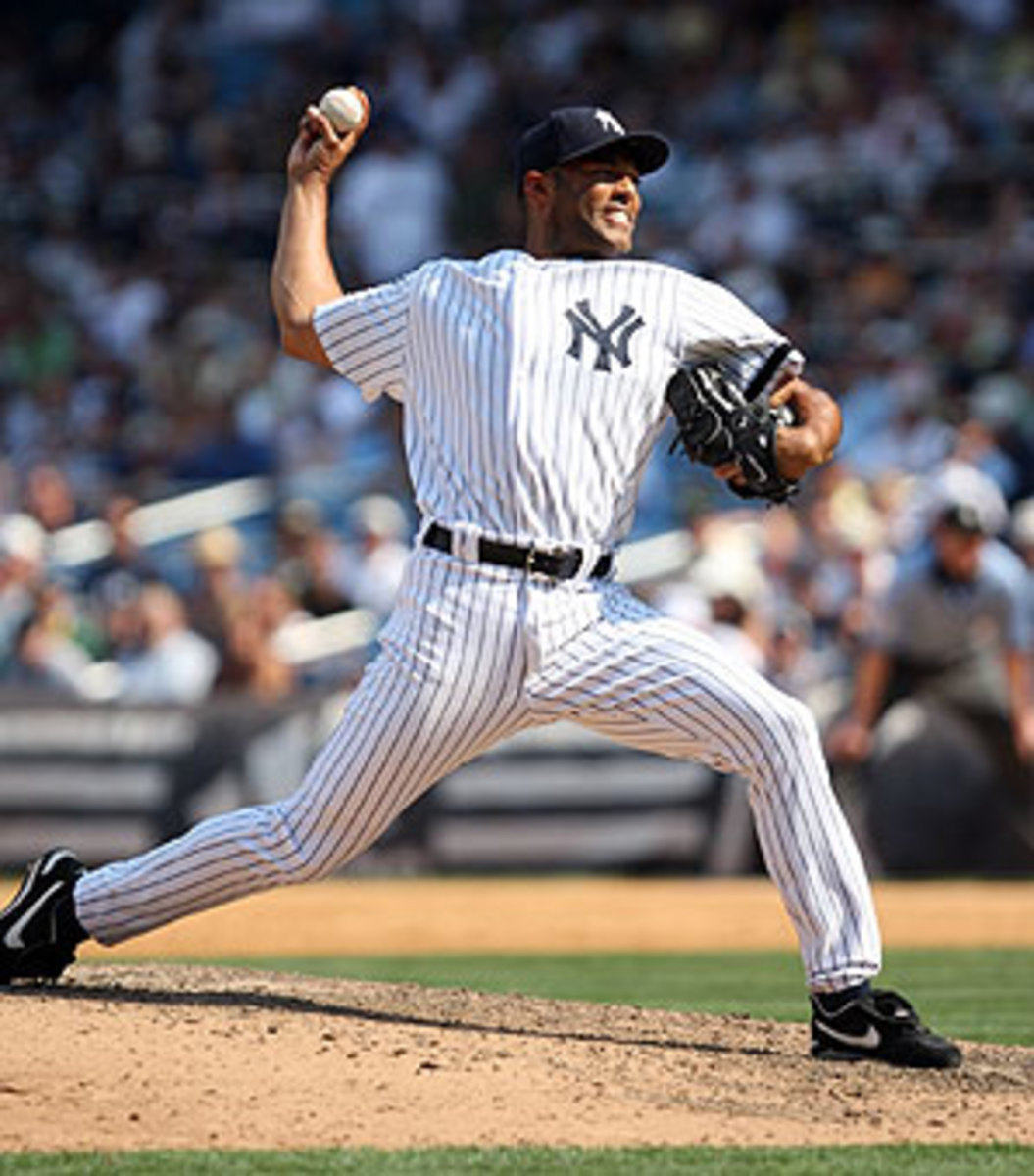Baseball's closer-minded problem
The quick answer is that baseball operates with much more of a groupthink mentality than one that encourages innovation. NFL teams have individual playbooks. Baseball teams all agree on "The Book," a one-size-fits-all philosophy. It also happens to be a convenient way to cover your butt if things don't work out. Just try to use your closer for two innings, for instance, and you might as well call a news conference asking to be fired.
(It's been eight years since anybody recorded three straight two-inning saves, Scott Williamson and Mike Morgan being the last to do so.)
That bring us to Francisco Rodriguez, who is not only two saves within reach of the all-time single-season record of 57, but also has come to personify the universal over-specialization of the modern bullpen. Rodriguez is only 26 years old and has some of the best stuff on the Angels staff. And yet not once in his 67 appearances this year has he obtained more than three outs. He never has pitched with his team trailing and only five times has he pitched with the game tied and only seven times did he enter with a runner on. He has six blown saves. His save total is, in a great part, a reflection of the Angels' poor offense. Los Angeles is 10th in the league in runs. Without the firepower to blow people out, the Angels leave just enough room for K-Rod to pad his save stats.
Rodriguez is eligible for free agency after this season, when the value of his overspecialization will be tested. Would you want to pay $15 million a year for a guy who doesn't pitch before the ninth inning, who has made the majority of his appearances with a lead of at least two runs in the ninth inning (a comfort zone even average relievers will convert more than 90 percent of the time)?
I'm not blaming K-Rod. I'm sure he could do much heavier lifting, especially as he is entering what should be the prime of his career. It's the system that's out of whack. What began as a good idea with Bruce Sutter and Dennis Ecklersley -- keep your best reliever available for as many close and late leads as possible -- has become bastardized into a universally embraced uber-specialization. Is there is nobody today who could work out of the bullpen the way Goose Gossage, Dan Quisenberry and Duane Ward did (leveraged for multiple innings)? The Yankees blew an opportunity to do so with Joba Chamberlain. He was trained as a starting pitcher and was being returned to starting pitching, but in between he was a reliever whom they treated like a closer, mostly limiting him to short appearances. The abrupt change made no sense. Chamberlain hurt his shoulder. Chamberlain should have been a multiple inning troubleshooter.
Ever since Tony La Russa popularized the specialized bullpen with Eckersley in 1988, managers have been dumbing down the system. Teams are paying their best pitchers more and more money to do less work. More games are left in the hands of setup relievers, who are the most fungible year-over-year commodity in the game.
Here's one statistical look at how managerial groupthink has continued to devolve bullpen usage: the number of saves recorded by getting more than three outs. Since Eckersley's breakout 1988 season, such saves have declined so steadily that -- even with two expansions since then -- they will have dropped 76 percent in 20 years. Take a look at the trend in five-year increments:
Quisenberry had 35 saves of more than one inning in 1983 alone. As recently as 1993, John Wetteland had 19 such saves. Now most guys aren't even getting half as many such saves. Here are the 2008 leaders of saves with more than three outs:
The Yankees always had an edge over teams with the ability of their best pitcher, Rivera, to clamp down games before the ninth inning. What the Red Sox have done with Papelbon is to match that weaponry. Papelbon is probably the best closer in the game because of his ability to consistently lock down more than the final three outs.
That brings us to October, where Papelbon showed his stuff last postseason. This October, Angels manager Mike Scioscia will have two choices with K-Rod when a postseason game hinges on a high leverage situation in the eighth inning: he can deploy Rodriguez in a situation he hasn't pitched in all year, or he can leave his best reliever locked up in the bullpen, after which he can tell the press, "That's how we've done it all year."
Scioscia would be smart to get Rodriguez into games earlier, especially with the extra off days in the postseason schedule. Bullpen depth matters less in October; bullpen stoppers matter more. For instance, Baseball Prospectus developed what it calls its "Secret Sauce" by combining what it found to be the three greatest factors of successful playoff teams: a power pitching staff that strikes people out, a good defense and a stud closer. That's it. Of the past 10 world champions, seven of them were ranked no lower than fourth in the Secret Sauce rankings. (The Sauce pegged three postseason winners: the '01 D'backs and '04 and '07 Red Sox.) The three championship teams that escaped the Sauce's wizardry each confounded the system by changing closers (the '03 Marlins, from Braden Looper to Ugueth Urbina; the '05 White Sox, from Dustin Hermanson to Bobbby Jenks, and the '06 Cardinals, from Jason Isringhausen to Adam Wainwright). This year? So far the Sauce likes Boston again, followed by the Cubs, Angels and Blue Jays.





